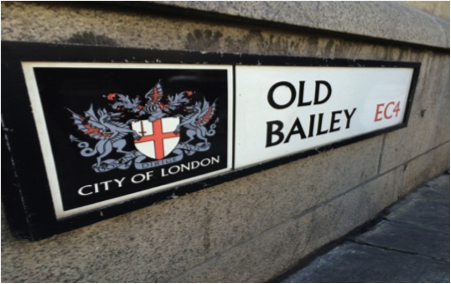Judicial Girl Power: a long way off?
All of our first year law undergrads took part in an exercise in week one of their LLB where they escaped City and went to visit a number of buildings of significance in the local area, before tackling some research questions.
They were then asked to write a blog post inspired by their travels. 21 winners were selected from all those posts submitted – this is one of those – thanks to Zara Gheasuddin.
Central London: the heart of international and national litigation, but also the heart of gender-difference in the legal profession.
Even today, it is clear that women are still having to wait generations before they are fairly- represented in the legal profession, with statistics showing that male solicitors are paid 38% more than their female counterparts. Patriarchal judges such as Lord Sumption with very particular views on this matter are the reason why many women are deterred from undertaking a profession in the legal sector. In an interview with the Evening Standard, Sumption was reported to have said that the judiciary could be “destroyed very easily”, if the election of judicial candidates was in favour of women.
Many in the legal profession would rather not discuss gender prejudice, but it pops up as a subject of discussion at many international conferences. At the ABA conference in 2015, the primary topic of discussion was gender inequality in the legal sector. Attendee Professor Felice Batlan, a legal academic, believes not enough is being done to entice and retain women within the sector.
The discussion of insistent gender prejudice in the legal profession is not liked by the insufficient successful females in the profession, who would rather deny the issue. But, even today in the 21st century litigation organisations such as the ABA, hold conferences, where this year, the primary topic of discussion was gender inequality in the legal occupation. Professor Felice Batlan, who attended this conference, a legal academic, believes not enough is being done to entice and maintain women to legal organisations and institutions.
Baroness Hale, Britain’s only female Supreme Court Justice believes that the use of positive discrimination to appoint more female justices would greatly improve the quality of justice. The gender balance gets worse the higher the court, and in 2010, England and Wales came fourth from the bottom in terms of equal gender representation. There is of desperate need for advocates such as Lady Hale to be vocal about this matter thus draw attention to it.
However, some evidence suggests that this custom is slowly but surely changing. Diversity figures released early last month from the Judicial Office of England and Wales showed that 40% of the country’s 8900 judges are now women! Other statistics released in July of this year, show that there has been the highest increase in the number of female judges in the High Court and the Court of Appeal. 21 out of 106 High Court judges are female, an all-time high! These statistics demonstrate that change is happening and it is happening today. Similarly, 8 out of 38 Court of Appeal Judges are female, in April 2014, this figure was down at 7! Evidence from the Judicial Appointments Commission show that more and more female judges are being recommended for appointments to the judiciary which in time will result to more females taking up more places in the judiciary.
As I walk through the boulevards of Farringdon, the golden rays of the sun warm my back. The iconic legal venues I visited today were soaked in history; highlighting decades of heritage but also decades of sexism. First, the Central Criminal Court of England and Wales, or more commonly known as the Old Bailey; a crown court where many criminal cases are tried. A few roads down, is the Middlesex Sessions House, or The Old Sessions House; once the largest and busiest Magistrates courthouse in the whole of England, where summary offences were tried.
Traditionally, the judges on the panels have been middle-aged, white men but today there is evidence of this changing, especially in the lower courts. For example, Judge Zoe Smith QC and Judge Rebecca Poulet QC are two judges at the Old Bailey who have been attending hearings; from manslaughter to theft, for a long period of time. Two individuals who are changing stereotypes and giving aspiring, young, females a flicker of hope.
Half a mile west from the Old Bailey is the High Court. The High Court has recently acquired fame for having a record number of female judges. Judge Mary Hogg QC was appointed in 1995 as a judge of the High Court of Justice where she sits in the Family Division. At the time of her appointment she was only the seventh female High Court judge, a figure which is progressively changing.
The empirical evidence that I have gathered in this article, suggests that the legal professional sector is still excessively askew towards one gender- male. The current disproportion will not improve the quality of justice and shows that the UK, although regarded a very modern society, is still stuck in a medieval period.

